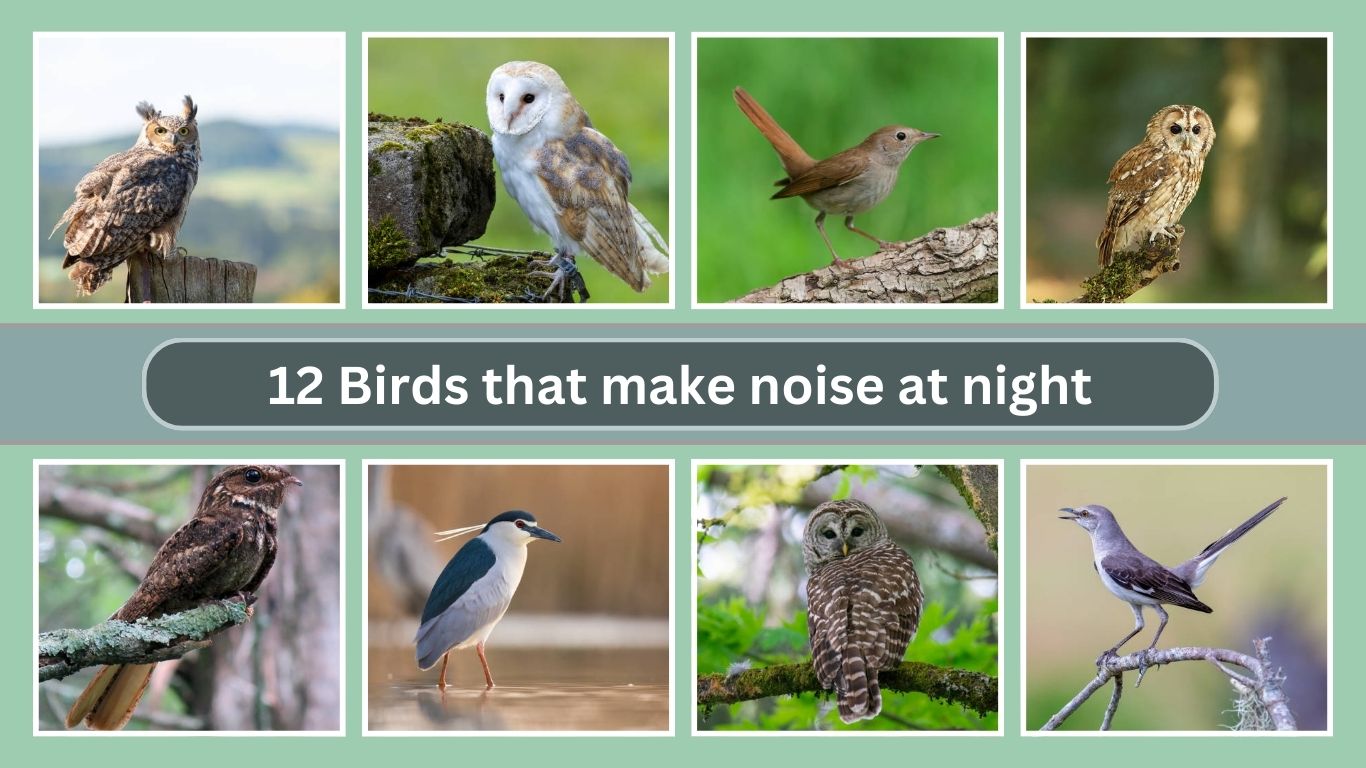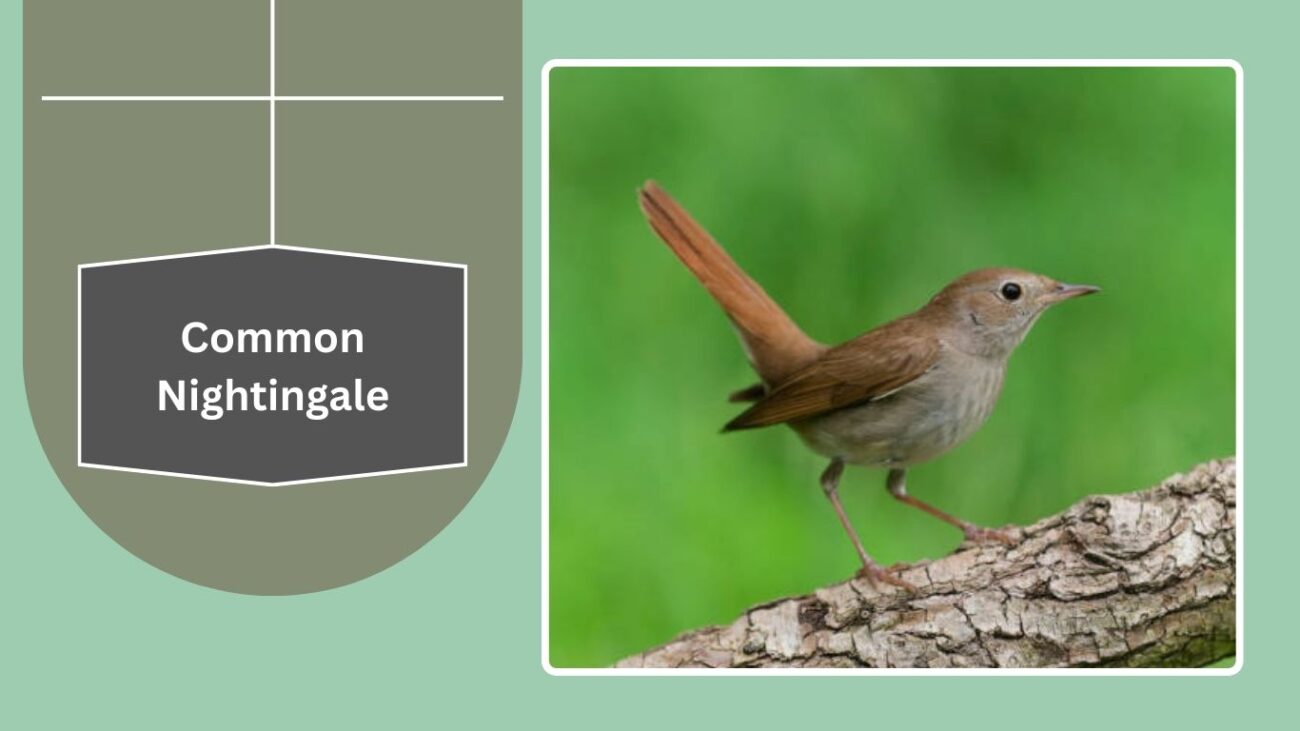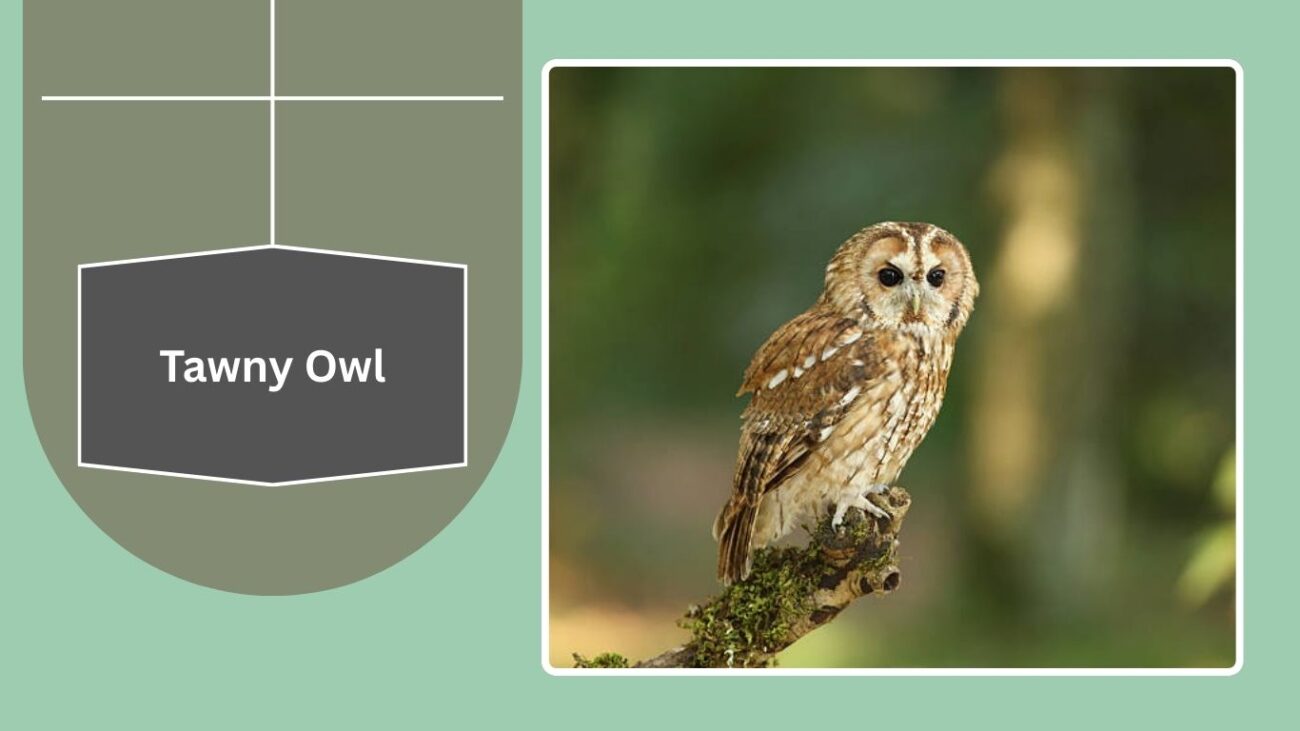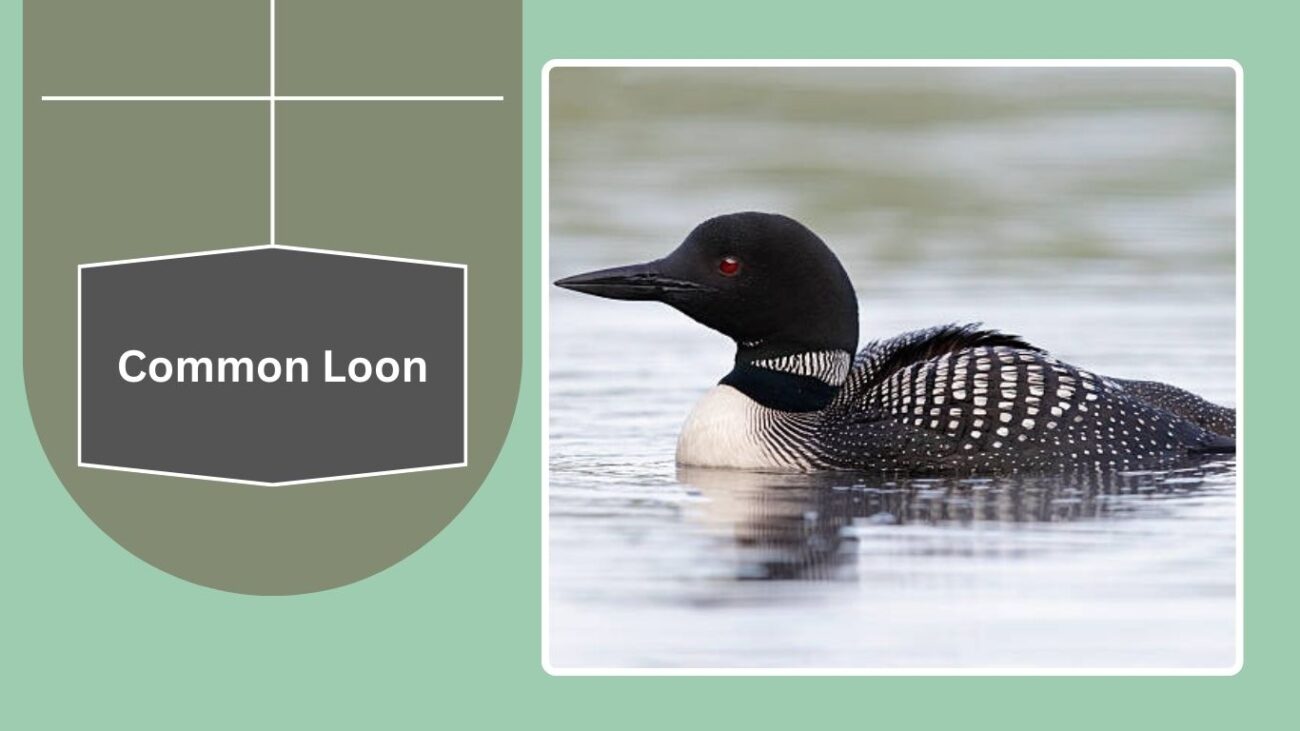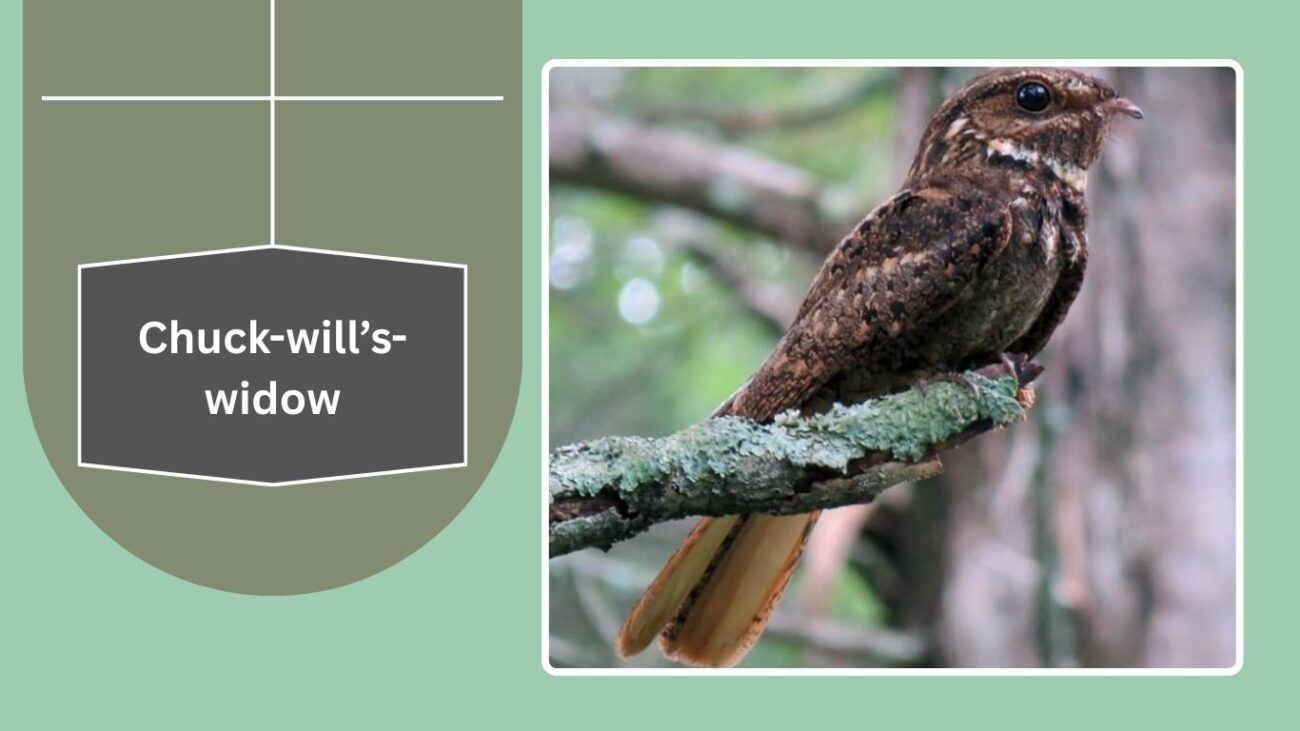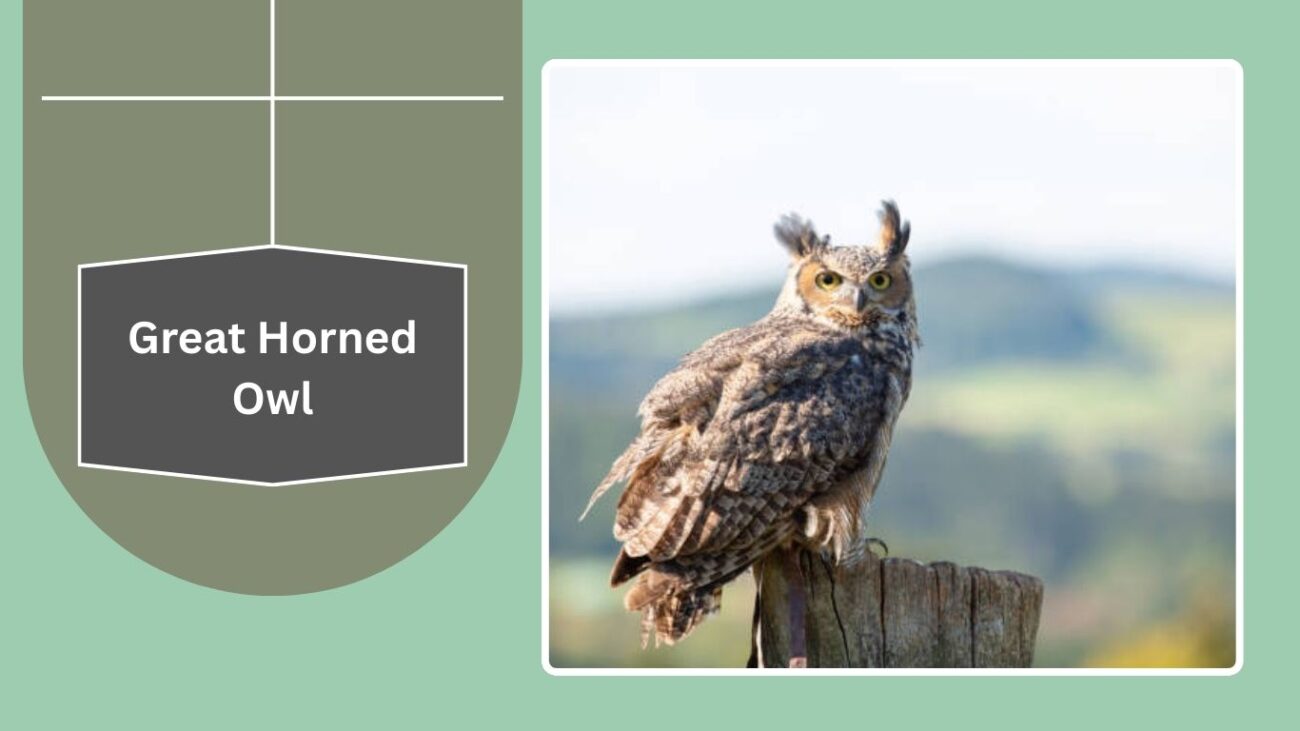When the sun sets, the world doesn’t fall completely silent—many birds continue to fill the darkness with their unique calls. From owls hooting in forests to nightjars singing in open woodlands, these nocturnal and crepuscular species create mysterious soundscapes after dark. Their voices serve purposes ranging from marking territory to attracting mates. Here are 12 fascinating birds that make noise at night, each with its own story to tell.
1. Eastern Whip-poor-will
The Eastern Whip-poor-will (Antrostomus vociferus) is a nocturnal bird famous for its haunting and repetitive song that echoes through forests on summer nights. Its call, which sounds like “whip-poor-will,” can be heard hundreds of times in a row, sometimes continuing for hours without pause. This bird is part of the nightjar family and is perfectly adapted to a life of camouflage and nighttime hunting.
Identification
- Size: About 8–10 inches (20–25 cm) in length with a wingspan of 16–18 inches (40–46 cm)
- Coloration: Mottled brown, gray, and black feathers that provide excellent camouflage against leaf litter and tree bark
- Head: Large and flat with a wide gape for catching insects mid-flight
- Eyes: Large and dark, adapted for excellent night vision
- Feet: Small and weak, designed more for perching than walking
Habitat
Eastern Whip-poor-wills prefer open woodlands, forest edges, pine barrens, and areas with dense undergrowth. They thrive in places with leaf-strewn ground where their plumage makes them nearly invisible. They avoid deep, dark forests and instead favor semi-open spaces where insects are abundant.
Behavior
These birds are strictly nocturnal, spending their days resting motionless on the ground or low branches, blending seamlessly into their surroundings. At night, they take to the skies to hunt moths, beetles, and other flying insects. Their hunting style involves aerial foraging, catching prey with their wide mouths while flying swiftly through the air.
Importance
The Eastern Whip-poor-will plays an important ecological role as a natural controller of insect populations. Its distinct calls have also made it a cultural symbol in literature, music, and folklore, often associated with the mysteries of the night. For many people in rural North America, its song marks the beginning of warm summer nights.
2. Common Nightingale
The Common Nightingale (Luscinia megarhynchos) is one of the most celebrated songbirds in the world, admired for its powerful and beautiful nighttime singing. Unlike many birds that quiet down after sunset, the nightingale continues its melodious calls well into the night, especially during the breeding season. Its song is rich, varied, and filled with whistles, trills, and gurgling notes.
Identification
- Size: About 6–7 inches (15–18 cm) in length
- Coloration: Plain brown upperparts with a reddish tail and buff to whitish underparts
- Bill: Thin and pointed, adapted for insect feeding
- Eyes: Large and dark, giving an alert expression
- Wings: Rounded with a strong, fluttering flight
Habitat
Nightingales inhabit woodlands, dense scrub, hedgerows, and thickets, often close to water. They prefer areas with thick vegetation where they can remain hidden while singing loudly from within the cover of bushes or low trees.
Behavior
This bird is well known for its nocturnal singing, especially by males during the breeding season to attract females and defend territories. Nightingales feed mostly on insects, larvae, and other small invertebrates, but in late summer, they may also consume berries. They are shy and secretive, rarely seen in the open, which makes their voice more noticeable than their appearance.
Importance
The Common Nightingale has long been a symbol in poetry, literature, and folklore, representing love, longing, and the beauty of nature. Its enchanting song has inspired countless works of art across cultures. Beyond cultural value, the bird plays a role in insect control in its native habitats of Europe, Asia, and North Africa.
3. Eastern Screech Owl
The Eastern Screech Owl (Megascops asio) is a small but vocal nocturnal owl native to North America. Despite its name, it does not actually “screech” very often; instead, it produces a variety of trills and whinnies that echo through the night. This owl is highly adaptable and can live in both forests and suburban areas, making its nighttime calls familiar to many people.
Identification
- Size: About 6–10 inches (16–25 cm) in length with a wingspan of 18–24 inches (46–61 cm)
- Coloration: Two main color morphs – gray and reddish-brown – both with mottled patterns for camouflage
- Eyes: Large, yellow eyes adapted for night vision
- Ear tufts: Small feather tufts on the head that resemble “ears”
- Bill: Hooked and strong, suited for tearing prey
Habitat
Eastern Screech Owls are extremely adaptable, inhabiting woodlands, parks, orchards, and even urban neighborhoods. They prefer areas with scattered trees and open spaces where prey is abundant. They often use tree cavities, nest boxes, or old woodpecker holes for roosting and nesting.
Behavior
These owls are nocturnal hunters, preying on insects, small mammals, birds, amphibians, and even reptiles. They hunt silently, swooping down on their prey from perches. Their calls include trills, descending whinnies, and soft hoots, which are most often heard at night during the breeding season. Despite their small size, they are fierce and highly territorial.
Importance
The Eastern Screech Owl plays a vital ecological role by controlling populations of insects and rodents. Its adaptability also makes it one of the most common owls in North America. Its calls are often associated with mystery and folklore, with some traditions viewing them as omens, while others see them as guardians of the night.
4. Barred Owl
The Barred Owl (Strix varia) is a large, vocal owl known for its distinctive call that sounds like “Who cooks for you? Who cooks for you-all?”. This call often carries far into the night, making the Barred Owl one of the most easily recognized nocturnal birds in North America. Unlike many other owls, it is relatively social and may even engage in duets with its mate.
Identification
- Size: 16–25 inches (40–63 cm) in length with a wingspan of 38–49 inches (96–125 cm)
- Coloration: Brown and white plumage with horizontal bars on the chest and vertical streaks on the belly
- Eyes: Large and dark brown (unlike many owls that have yellow eyes)
- Head: Rounded with no ear tufts
- Bill: Yellow and slightly hooked
Habitat
Barred Owls favor dense forests, wooded swamps, river bottoms, and mature woodlands. They thrive in habitats with large trees for nesting cavities and a good mix of open spaces for hunting. In suburban areas, they are sometimes spotted near parks and wooded neighborhoods.
Behavior
These owls are strictly nocturnal hunters, preying on small mammals, birds, amphibians, reptiles, and occasionally fish. They sit quietly on a perch and swoop down silently to capture prey. Their calls are diverse, ranging from the famous “who cooks for you” hoot to cackles, barks, and screeches during courtship or territorial disputes.
Importance
The Barred Owl plays an important role in maintaining balance in ecosystems by controlling populations of rodents and other small animals. Its haunting call has made it a subject of folklore, often symbolizing mystery, wisdom, or even supernatural omens. It also holds ecological importance by competing with other owl species, sometimes even displacing them in shared habitats.
5. Barn Owl
The Barn Owl (Tyto alba) is one of the most widespread owl species in the world, found on every continent except Antarctica. Known for its eerie, drawn-out screech rather than a traditional hoot, the Barn Owl’s calls can be unsettling when heard at night. Its ghostly pale appearance and silent flight have given it a strong place in myths and folklore across cultures.
Identification
- Size: About 13–16 inches (33–41 cm) long with a wingspan of 31–37 inches (80–95 cm)
- Coloration: Pale, heart-shaped facial disc with white to golden underparts and mottled golden-brown upperparts
- Eyes: Dark, forward-facing eyes adapted for night vision
- Head: Rounded with no ear tufts
- Wings: Long and broad, allowing for slow, silent flight
Habitat
Barn Owls are highly adaptable and can live in farmlands, grasslands, open woodlands, and urban edges. They often roost and nest in barns, church towers, silos, tree cavities, and nest boxes. Their presence is often tied to areas rich in small mammal populations, especially rodents.
Behavior
Primarily nocturnal hunters, Barn Owls rely on their exceptional sense of hearing to locate prey in complete darkness. They feed mainly on rodents such as mice, voles, and rats, making them highly beneficial for pest control. Their calls are harsh, high-pitched screeches, often described as spine-chilling. During courtship, males may also produce rapid “kleeer” calls or wing-clapping displays.
Importance
Barn Owls are considered one of the most important natural pest controllers, consuming thousands of rodents each year. In folklore, their ghostly appearance and piercing screeches have linked them to omens, mystery, and supernatural beliefs. Ecologically, they serve as key predators in balancing small mammal populations, especially in agricultural areas.
6. Tawny Owl
The Tawny Owl (Strix aluco) is a medium-sized owl native to Europe and parts of Asia, famous for its classic “twit-twoo” call that often defines the soundscape of the night in woodlands. While only the males produce the full “hoo-hoo” call, females respond with sharp “ke-wick” notes, creating the duet that many people recognize as the archetypal owl sound.
Identification
- Size: Around 15–17 inches (37–43 cm) long with a wingspan of 32–40 inches (81–100 cm)
- Coloration: Plumage varies from reddish-brown to gray-brown, mottled for camouflage
- Eyes: Large, dark brown eyes that give it a soulful appearance
- Head: Rounded with no ear tufts
- Bill: Pale yellowish and slightly hooked
Habitat
Tawny Owls prefer deciduous and mixed woodlands, often near farmland, gardens, or urban parks. They are cavity nesters, frequently choosing tree hollows, old crow nests, or even nest boxes when available. Their adaptability allows them to live close to human settlements while remaining mostly hidden.
Behavior
These owls are strictly nocturnal and rely on stealth to hunt small mammals, birds, amphibians, and insects. They perch silently before swooping down on prey with remarkable accuracy. Tawny Owls are territorial, and their loud calls at night are used both to mark territory and to communicate with mates.
Importance
The Tawny Owl plays an important role in maintaining rodent populations and keeping ecosystems balanced. Its recognizable call has made it deeply symbolic in European folklore, often associated with mystery, wisdom, or omens. Because of its adaptability, it is also one of the most common owls encountered across its range.
7. Northern Mockingbird
The Northern Mockingbird (Mimus polyglottos) is a highly vocal songbird known for its impressive ability to mimic the calls of other birds, animals, and even man-made sounds. Unlike most songbirds, it often sings late into the night, especially during the breeding season, making it one of the most noticeable nighttime singers in North America.
Identification
- Size: About 8–10 inches (20–25 cm) in length with a wingspan of 12–14 inches (31–36 cm)
- Coloration: Gray to brownish-gray upperparts with lighter underparts, and white wing patches visible in flight
- Tail: Long and dark with white outer feathers
- Bill: Slender and slightly curved
- Eyes: Yellow to light brown, alert and expressive
Habitat
Northern Mockingbirds thrive in open areas with shrubs, gardens, parks, forest edges, and urban neighborhoods. They prefer habitats that provide perches for singing and open ground for foraging. They are commonly seen near human dwellings due to their adaptability.
Behavior
Famous for their vocal repertoire, mockingbirds can imitate up to 200 different sounds, including other bird species, frogs, and mechanical noises. Males are especially noisy at night during spring and summer, using their nonstop singing to attract mates and defend territory. They feed on insects, fruits, and berries, often hopping on the ground in search of food.
Importance
The Northern Mockingbird plays a dual role in ecosystems: controlling insect populations while also dispersing seeds through fruit consumption. In culture, it is admired for its singing ability and is the state bird of multiple U.S. states. Its presence at night, filling the darkness with varied and melodic calls, makes it one of the most beloved yet loud nighttime birds.
8. Black-crowned Night Heron
The Black-crowned Night Heron (Nycticorax nycticorax) is a stocky, medium-sized wading bird well known for its nocturnal activity. Unlike many other herons that feed during the day, this species is most active at dusk and throughout the night, often making harsh, barking calls as it flies between feeding grounds.
Identification
- Size: About 22–28 inches (56–71 cm) in length with a wingspan of 45–47 inches (115–120 cm)
- Coloration: Adults have a black crown and back, gray wings, and whitish underparts; juveniles are brown and streaked
- Eyes: Large and red, perfectly adapted for night vision
- Neck: Short and thick compared to other herons
- Bill: Stout, black, and sharply pointed
Habitat
These herons inhabit wetlands, marshes, rivers, ponds, and coastal lagoons, often roosting in trees or shrubs near water during the day. They form colonies and are commonly found near both freshwater and saltwater environments.
Behavior
Black-crowned Night Herons are primarily nocturnal feeders, hunting fish, frogs, insects, and crustaceans after dark. During the day, they remain relatively still and quiet, but at night, their loud “quawk” calls can be heard echoing across wetlands. They are social birds, often nesting in large colonies with other herons and egrets.
Importance
By feeding on fish and aquatic invertebrates, Black-crowned Night Herons play a vital role in maintaining the balance of wetland ecosystems. Their nighttime foraging also reduces competition with diurnal herons. While not as celebrated as songbirds, their nighttime calls are distinctive sounds of wetland areas after sunset.
9. Common Loon
The Common Loon (Gavia immer) is a large, striking waterbird famous for its eerie, echoing calls that often carry across northern lakes at night. These haunting sounds are part of their communication system, ranging from wails to yodels, and are often described as some of the most beautiful yet haunting nighttime bird sounds in nature.
Identification
- Size: About 26–36 inches (66–91 cm) long with a wingspan of 50–60 inches (127–152 cm)
- Coloration: Breeding adults have black heads, white underparts, and a black-and-white checkered back; non-breeding adults are grayish with white throats
- Bill: Long, straight, and dagger-like, usually black
- Eyes: Striking red eyes, which help with underwater vision
- Body: Heavy and streamlined, built for diving
Habitat
Common Loons prefer northern freshwater lakes, ponds, and coastal waters. They need large, clear lakes with abundant fish populations and enough open water for their long takeoff runs. In winter, they migrate to coastal marine environments.
Behavior
Loons are expert divers, using their strong legs set far back on their bodies to propel themselves underwater in pursuit of fish. At night, their calls include long wails, mournful yodels, and laughing tremolos, which serve to communicate territory boundaries and maintain pair bonds. They are less vocal outside the breeding season.
Importance
The Common Loon is an iconic species of North America’s northern lakes, symbolizing wilderness and solitude. Its eerie calls are often featured in films and literature to evoke mystery or tranquility. Ecologically, loons play a role as top predators in aquatic ecosystems, keeping fish populations in balance.
10. Chuck-will’s-widow
The Chuck-will’s-widow (Antrostomus carolinensis) is the largest nightjar in North America and is famous for its loud, repetitive nighttime song that sounds like its name: “chuck-will’s-widow.” This call is often repeated continuously for long periods, filling warm summer nights with its distinct rhythm.
Identification
- Size: About 11–13 inches (28–33 cm) in length with a wingspan of 22–26 inches (56–66 cm)
- Coloration: Mottled brown, gray, and buff plumage that provides excellent camouflage against forest floors and tree bark
- Head: Large and broad with a wide mouth designed for catching insects in flight
- Eyes: Large, dark eyes adapted for night vision
- Tail: Long and rounded, with subtle pale markings
Habitat
Chuck-will’s-widows inhabit open woodlands, pine forests, swamps, and scrubby areas. They prefer warm climates and are most commonly found in the southeastern United States, particularly in areas with sandy soil and dense vegetation for cover.
Behavior
These birds are nocturnal insect hunters, feeding mainly on moths, beetles, and other flying insects they catch during flight. They are most noticeable by their persistent singing, which often begins at dusk and continues well into the night. During the day, they rest motionless on the ground or tree limbs, blending in with their surroundings.
Importance
The Chuck-will’s-widow plays a significant ecological role by helping control insect populations. Its distinct song makes it a defining sound of summer nights in the American South. In folklore and tradition, its calls are sometimes linked to omens or supernatural beliefs, adding to the bird’s mystique.
11. Great Horned Owl
The Great Horned Owl (Bubo virginianus) is one of the most powerful and widespread owls in the Americas. Known for its deep, resonant hoots that echo through forests at night, it is often called the “tiger of the sky” due to its strength, hunting skills, and adaptability.
Identification
- Size: About 18–25 inches (46–64 cm) long with a wingspan of 40–57 inches (101–145 cm)
- Coloration: Mottled gray-brown with a white throat patch and darker barring across the body
- Eyes: Large, yellow eyes with excellent night vision
- Head: Prominent feather tufts or “horns” that give the species its name
- Bill & Talons: Strong, hooked bill and extremely powerful talons capable of exerting immense crushing force
Habitat
Great Horned Owls are highly adaptable and can be found in forests, deserts, wetlands, grasslands, and even urban areas. They require large trees or cliffs for nesting but are not overly selective, often taking over nests built by hawks, herons, or crows.
Behavior
These owls are apex nocturnal predators, feeding on a wide variety of prey including rabbits, rodents, skunks, birds, reptiles, and even other owls. Their deep “hoo-hoo-hoo hoo” call is most often heard at night, especially during the breeding season in winter. They are territorial and use their hoots to defend nesting areas.
Importance
The Great Horned Owl plays a crucial role in controlling mammal and bird populations, keeping ecosystems balanced. Its haunting nighttime calls make it one of the most iconic nocturnal voices in the Americas. In culture and folklore, it is often seen as a symbol of wisdom, mystery, or fear, depending on tradition.
12. Killdeer
The Killdeer (Charadrius vociferus) is a plover well known for its loud, piercing “kill-deer” call, which can often be heard at night. Unlike many shorebirds, the Killdeer frequently vocalizes after dark, especially when disturbed or defending its nesting territory. Its high-pitched cries carry far and are a familiar sound across open landscapes.
Identification
- Size: About 8–11 inches (20–28 cm) long with a wingspan of 18–24 inches (46–61 cm)
- Coloration: Brown upperparts with white underparts, two distinctive black breast bands, and a bright orange rump visible in flight
- Eyes: Large and dark with a white eyering
- Bill: Short and straight, adapted for probing ground insects
- Legs: Long and slender, suited for running across open ground
Habitat
Killdeer are highly adaptable and can be found in fields, grasslands, mudflats, pastures, golf courses, and even parking lots. They prefer open areas with minimal vegetation where their cryptic coloring helps them blend into the ground.
Behavior
These birds are ground nesters, often laying eggs directly on gravel or soil. At night, their sharp cries are used to alert others of potential danger or to defend territory. They are also known for their dramatic “broken-wing display,” where they pretend to be injured to lure predators away from their nest. Their diet consists mainly of insects, worms, and small invertebrates.
Importance
The Killdeer serves as both a pest controller and an ecological indicator species, thriving in disturbed habitats. Its nighttime calls add to the chorus of nocturnal bird sounds across open landscapes. In folklore, the Killdeer’s persistent cries are sometimes seen as omens of change or warning.

